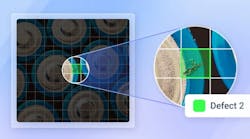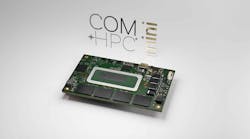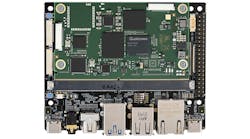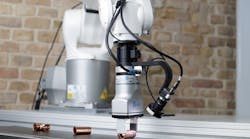The nature of today's electronics marketplace was brought to mind recently in discussions with a major manufacturer of OEM image-processing components. With the systems-integration market becoming more applications-oriented, many vendors are tailoring their products toward niche markets. In the machine-vision market, for example, the ability to integrate smart sensors, processors, and networking products has led to the development of smart cameras, which, in turn, reduces the cost of low-end machine-vision systems. In the security market, the abundance of low-cost CMOS imagers has resulted in low-cost, wireless, home-based security systems. In medical image processing, low-cost frame grabbers and stand-alone PC-based image processors has meant that low-cost ultrasound equipment can be built more cost-effectively.
Despite these advances, though, the technological challenges of each market has lured some OEM suppliers into building products that, while customer-specific, may be overfeatured for other OEM applications. Certain of obtaining market share in some of these applications
areas, some OEM companies have even ventured into joint development and production efforts of end-user industrial, scientific, medical, military, and aerospace equipment.
Complex situation
Upon finding that these markets must be addressed in radically different ways, these companies have licensed or sold their technologies rather than pursue the end-user market. In Europe, especially, where divisions of sizable corporations are assigned specific functions, the situation is even more complex. Large multinationals offer, it seems, every product from semiconductors to digital cameras to cars. Often, designers of motor vehicles have little knowledge of the intelligent motion sensors being developed by the semiconductor division.
For buyers, purchasing products can easily go from bad to worse. For example, try to buy a broadcast video component encoder in the United States and the purchase must usually be made through a distributor. Try to talk to the designer about what the next-level design might look like and you may be shuffled from Europe to the United States or Japan in search of an answer. After a time, of course, you give up.
In the machine-vision market, finding a specific product to fill a particular application can be even more difficult. Developers wishing to purchase a low-cost machine-vision system, for example, can choose from more than 14 different products now on the market (see Vision sensors fulfill factory imaging tasks, p. 39). Despite this, finding a trade show where each of these products can be compared is next to impossible. At this month's Vision Show in Santa Clara, CA, only two of the companies that develop such products exhibited. Of the more than 26 vendors of camera modules (see Vision Systems Design, July 2002, p. 31), Narragansett Imaging (Slatersville, RI) and Videology (Greenville, RI) were the only vendors on the floor offering such products.
Because of this lack of crossfertilization of technologies and products, great ideas and projects can come to a halt rapidly. In the past, when 1 million gates on a die was still an integrated-circuit designer's dream, industrial automation, machine-vision, and image-processing systems were being designed at a high price.
serving more technologies
Today, many technologies, software tools, integrated circuits, and PCBs have been built to address specific markets. But they could just as easily be used to produce faster, cheaper, simpler, digital versions of products for other industries.
What is needed is the return of the renaissance engineers—those professionals in the industry who understand more than one technology, market, or application. They could spur the growth of the machine-vision market by designing versatile products that could be adapted to changing and new application needs.
What we seem to be stuck with today are people building very specific products for very specific markets. It's rather like being at the horse races with a bunch of engineers wearing blinders. But worse—even the course is blindered. Maybe it's time to take the blinders off and let the horses run wild.
Andy Wilson
EDITOR
[email protected]




